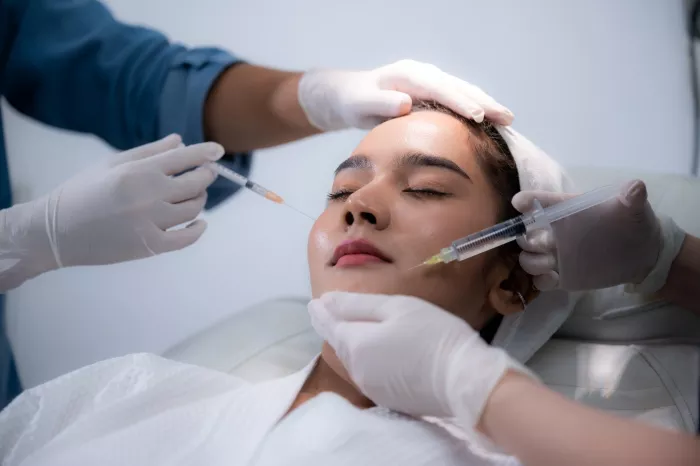Pockmarks, also known as acne scars or ice pick scars, can be a frustrating skin concern. These deep indentations often remain long after acne has healed, affecting skin texture and confidence. Many people wonder if dermal fillers can help smooth out these scars. The short answer is yes—fillers can temporarily improve the appearance of pockmarks by plumping the skin.
What Are Pockmarks?
Pockmarks are depressed scars that form when acne damages the skin’s deeper layers. Unlike surface-level scars, these indentations occur when the skin fails to regenerate enough collagen during healing. Common types include:
Ice pick scars – Deep, narrow pits
Boxcar scars – Wider, U-shaped depressions
Rolling scars – Wavy, uneven texture
These scars can be stubborn, often resisting topical treatments. This is where dermal fillers come into play.
How Do Dermal Fillers Work for Pockmarks?
Dermal fillers are gel-like substances injected beneath the skin to add volume. When used for pockmarks, they lift the depressed areas, making scars less noticeable. The results are immediate but not permanent, typically lasting 6 to 18 months depending on the filler type.
Best Fillers for Pockmarks
Not all fillers work the same for scarring. The most effective options include:
Hyaluronic Acid (HA) Fillers – Such as Juvederm and Restylane. These are popular because they are reversible and provide natural-looking results.
Calcium Hydroxylapatite (CaHA) – Like Radiesse, which also stimulates collagen over time.
Poly-L-Lactic Acid (PLLA) – Such as Sculptra, which works gradually by boosting collagen production.
The Treatment Process
Getting fillers for pockmarks is a quick, in-office procedure. Here’s what to expect:
Consultation – A dermatologist assesses your scars and recommends the best filler.
Numbing – A topical anesthetic may be applied to minimize discomfort.
Injection – The filler is carefully placed under each scar to lift it.
Recovery – Mild swelling or redness may occur but fades within a few days.
Results are visible immediately, with optimal effects appearing after any swelling subsides.
Pros and Cons of Using Fillers for Pockmarks
Advantages
Non-surgical – No incisions or downtime.
Quick results – Improvement is visible right away.
Minimal side effects – Most people experience only slight bruising.
Disadvantages
Temporary – Requires maintenance treatments.
Cost – Multiple sessions add up over time.
Not for all scars – Very deep scars may need additional treatments like lasers.
How Long Do Results Last?
Filler longevity depends on the product used:
HA fillers – 6 to 12 months
Radiesse – 12 to 18 months
Sculptra – Up to 2 years (builds collagen gradually)
Touch-up treatments can extend results.
Alternative Treatments for Pockmarks
If fillers aren’t the right fit, other options include:
- Laser resurfacing – Stimulates collagen for long-term improvement.
- Microneedling – Encourages skin regeneration.
- Subcision – A minor procedure to release scar tissue.
Combining fillers with these methods can enhance results.
Who Is a Good Candidate?
Fillers work best for people with:
- Mild to moderate pockmarks
- Realistic expectations (fillers improve but don’t erase scars completely)
- No active acne or skin infections
A dermatologist can determine if fillers are right for you.
Aftercare Tips
To maintain results:
- Avoid excessive sun exposure.
- Use gentle skincare products.
- Schedule follow-up treatments as needed.
Realistic Expectations
While fillers can significantly improve pockmarks, they won’t make scars disappear completely. The goal is to make them less noticeable for smoother-looking skin.
Conclusion
Dermal fillers offer a fast and effective way to reduce pockmarks without surgery. They work best for shallow to moderate scars and provide instant results. However, since the effects are temporary, maintenance sessions are needed. If you’re considering this treatment, consult a qualified specialist to determine if fillers are right for you.
Related topics:
How Long Do Dermal Fillers Last?
How much are dermal fillers for nose?
How Long Do Lip Dermal Fillers Last?


